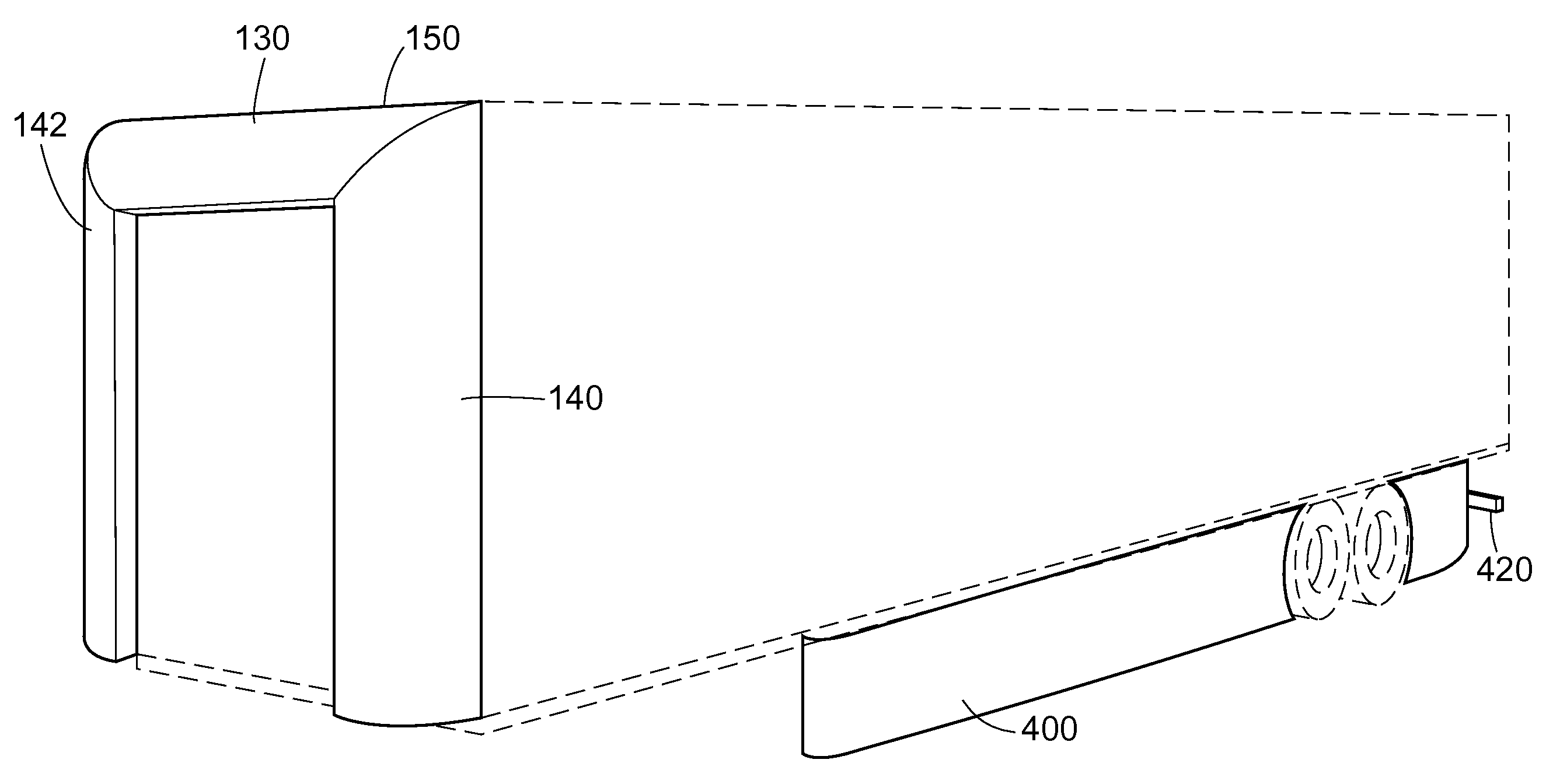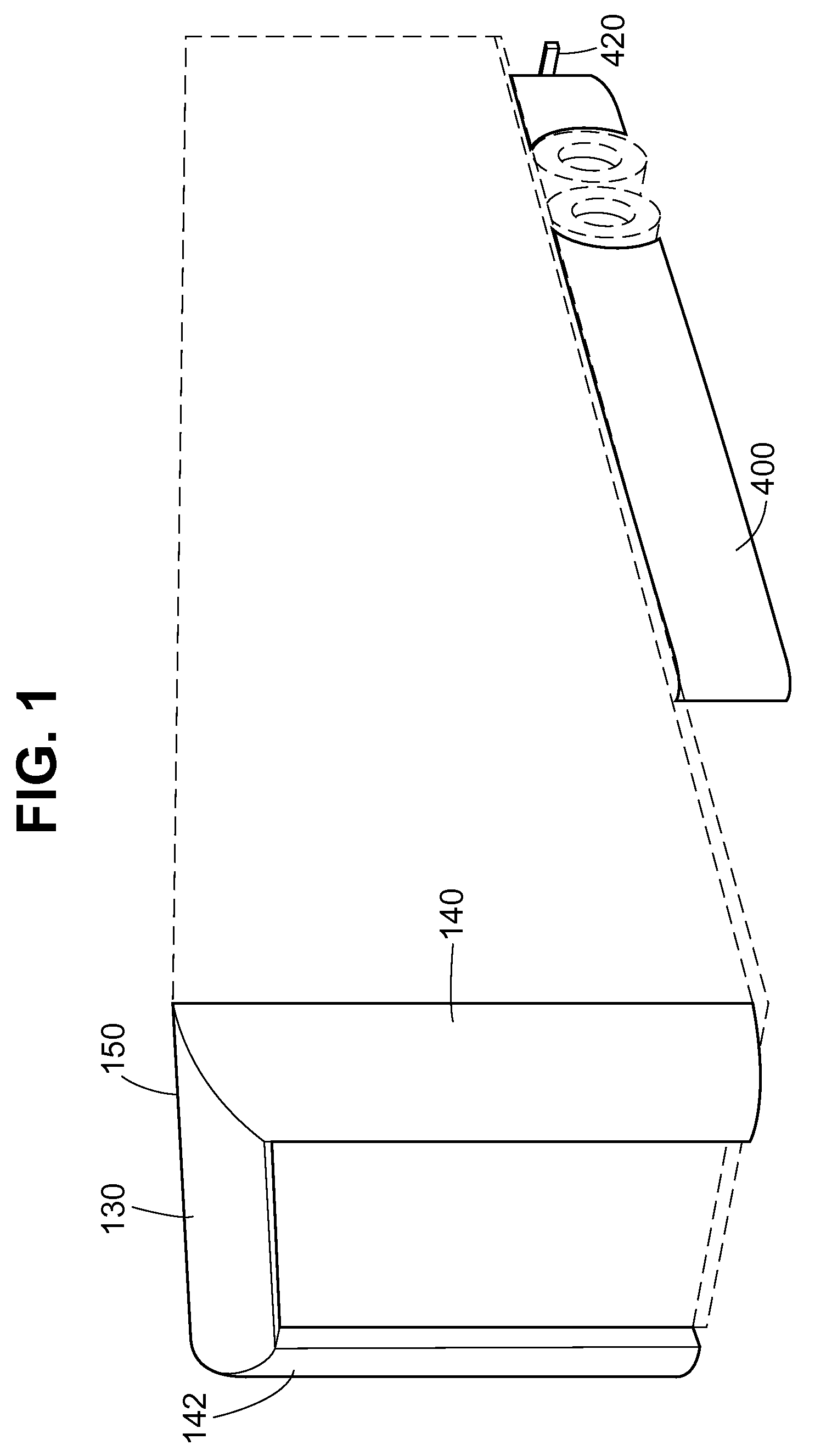Vehicle fairing structure
a technology for fairings and vehicles, applied in vehicle arrangements, roofs, transportation and packaging, etc., can solve the problems of increasing fuel consumption, increasing the cost of operation, and increasing the amount of power needed to move a vehicle over land or through the air, so as to reduce the aerodynamic drag
- Summary
- Abstract
- Description
- Claims
- Application Information
AI Technical Summary
Benefits of technology
Problems solved by technology
Method used
Image
Examples
Embodiment Construction
[0016]While the preferred embodiment of the invention is described in connection with a tractor-trailer combination, a fairing structure according to the invention may be used with any tandem vehicle arrangement. The invention is particularly suited for use on a tandem vehicle combination having a front vehicular component and a rear vehicular component connected to the front vehicular component. In such tandem vehicle arrangements, the rear vehicular component often projects above the front vehicular component and thus causes additional aerodynamic drag of a type referred to as form drag. Also, in such tandem vehicle arrangements, the rear vehicular component is separated from the front vehicular component by a gap, which also creates aerodynamic drag. The fairing structure is preferably positioned on the front of the rear vehicular component, and addresses both of these drag-producing factors.
[0017]To describe the drag created by the gap, the near wake of a bluff backed object lik...
PUM
 Login to View More
Login to View More Abstract
Description
Claims
Application Information
 Login to View More
Login to View More - R&D
- Intellectual Property
- Life Sciences
- Materials
- Tech Scout
- Unparalleled Data Quality
- Higher Quality Content
- 60% Fewer Hallucinations
Browse by: Latest US Patents, China's latest patents, Technical Efficacy Thesaurus, Application Domain, Technology Topic, Popular Technical Reports.
© 2025 PatSnap. All rights reserved.Legal|Privacy policy|Modern Slavery Act Transparency Statement|Sitemap|About US| Contact US: help@patsnap.com



